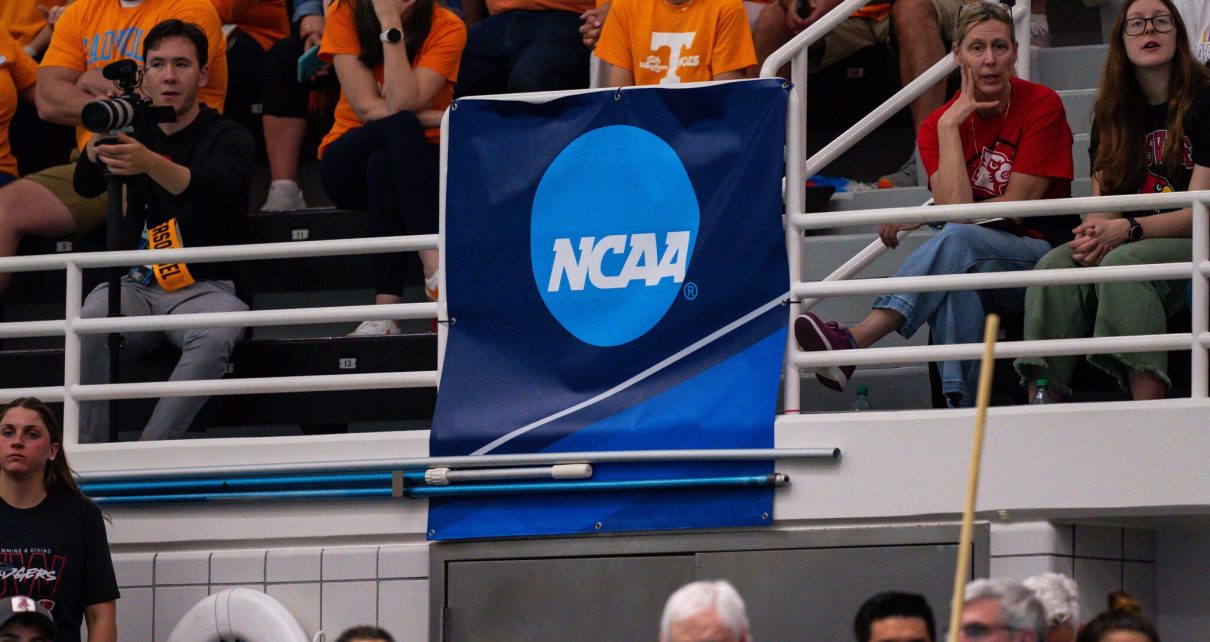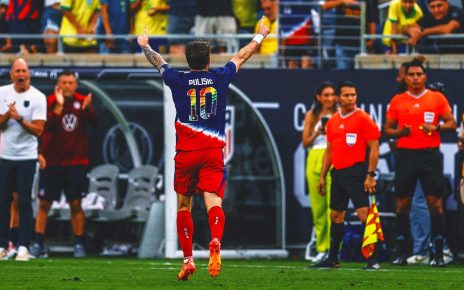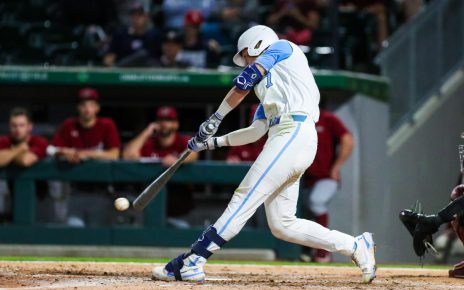The NCAA said it will consider a proposal next Thursday that would bring corporate sponsorships to football fields and jerseys following last week’s revenue-sharing settlement that ended three antitrust lawsuits against the organization.
Current NCAA rules permit the use of logos at bowl games, sponsored neutral sites, and fields where companies already own naming rights. Adding jersey patches next season could reportedly generate $5 million in the SEC alone, with another $1 million expected from 25-yard line sponsorships.
“I believe the NCAA is going to allow us to put a sponsor logo on the field during the regular season,” Florida athletic director Scott Stricklin said Wednesday at SEC spring meetings. “That’s an obvious revenue stream that has not been there in the past. The pro sports are putting patches on jerseys. That doesn’t seem like something that’s crazy for us to consider these days.”
Sponsored NCAA swim caps won’t create as much revenue as brand partnerships in football and basketball, of course, but they could be coming in the near future if the organization moves forward with the proposal.
The NCAA rules committee will be meeting next week to discuss permitting schools to display corporate logos on fields and are considering jersey patches.
We wonder how this will trickle over to swimming…🤔
What say you? pic.twitter.com/ODNMQrpGfP
— SwimSwam (@swimswamnews) May 31, 2024
The NCAA rules on logos on competition wear has at times become heated in swimming when it has led to disqualifications. At the 2019 Minnesota Invitational, a University of Texas relay was disqualified when a swimmer wore a suit that were legal under the rules of international competition but ran afoul of the NCAA’s limitations.
At the time, Texas swimmers blamed Cal head coach Dave Durden for reporting the logo violation, though that was never officially confirmed and one referee at the meet says that it was a referee that noticed the infraction.
The House v. NCAA settlement includes almost $2.8 billion in back damages for lost opportunities from the organization’s past restrictions on name, image, and likeness (NIL) dating back to 2016. Former Arizona State swimmer Grant House first brought the class-action lawsuit against the NCAA back in 2020 before college athletes were granted publicity rights. The more consequential component of the settlement, however, is a revenue-sharing model that would allow schools to share up to $22 million annually with athletes — essentially a salary cap — likely starting in the fall of 2025, if approved by U.S. District Judge Claudia Wilken.
Unlike past legal losses, NCAA member schools will pay the majority of the damages rather than the organization itself. Individual institutions will combine for 59% ($1.65 billion) while the NCAA will cover 41% ($1.65 billion) of the cost to about 14,500 players dating back to 2016. The 27 non-Power Five conference will pay $990 million over a decade compared to $664 million for the Power Five.
Without a settlement, the NCAA reportedly risked losing $20 billion in damages if the organization was dealt another defeat in court. The settlement doesn’t solve all of the NCAA’s problems as the organization still faces the possibility of college athletes becoming employees and potentially unionizing.
Texas A&M athletic director Trev Alberts offered an interesting perspective on the changing NCAA landscape during SEC spring meetings this week.
“We’ve just always had enough increasing revenue to overcome dumb expenses,” said Alberts, an expert on “dumb expenses” after spending more than $75 million to fire football coach Jimbo Fisher last year. “I’ve said it 100 times, and I’ll say it again: We don’t have a revenue problem in college athletics, we have an expense problem.”
One aspect of the settlement features roster limits replacing scholarship caps. Sources told SwimSwam that the SEC has discussed potential roster limits of 35 for women and 22 for men. The average men’s roster size in the SEC was 26 compared to 33 for women.




